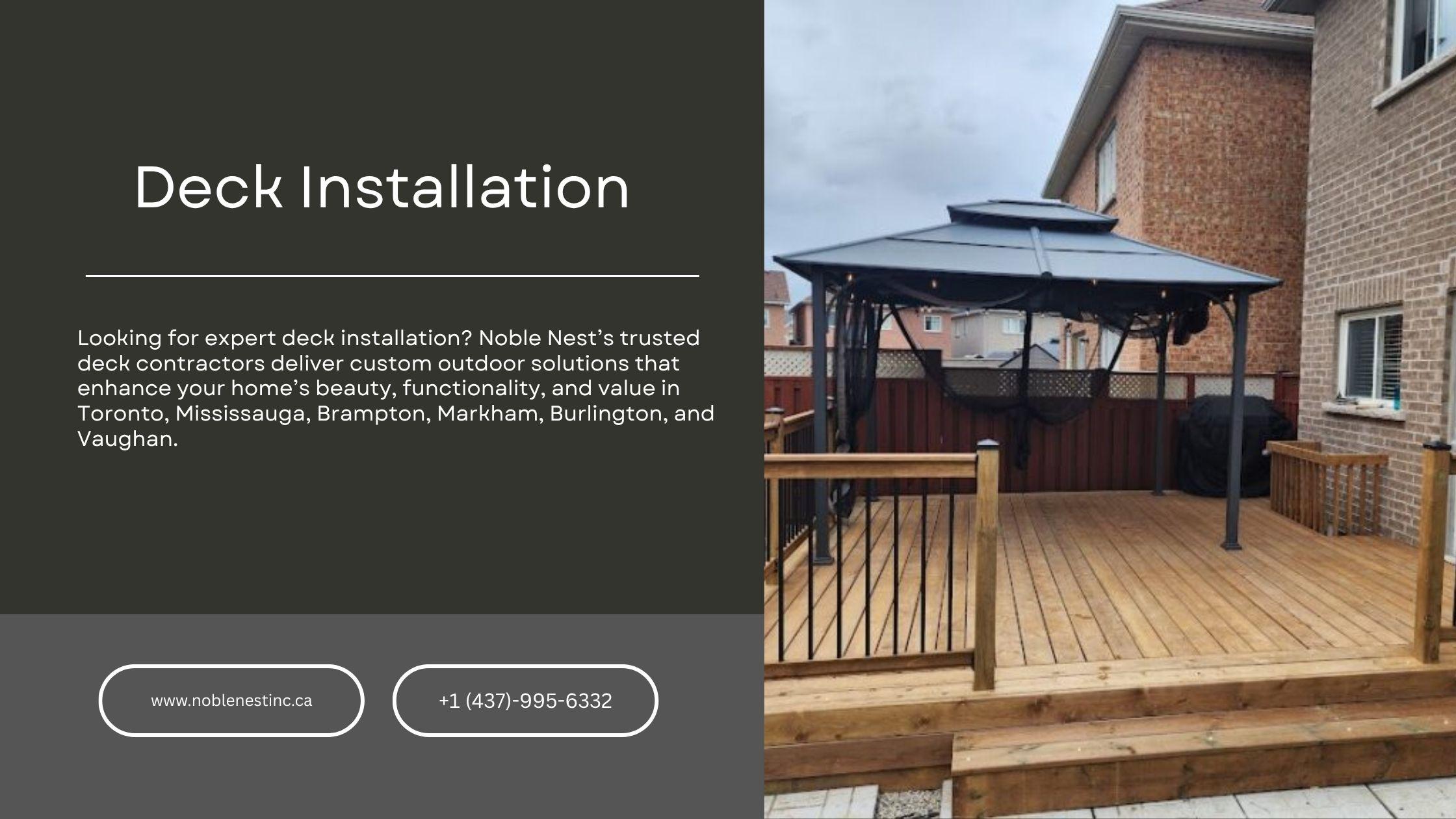Deck Installation

The Ultimate Guide to Deck Installation: Everything You Need to Know
Adding a deck to your home is one of the most rewarding home improvement projects you can undertake. Whether you’re dreaming of summer barbecues, sunset lounging, or increasing your home’s value, a well-constructed deck delivers both beauty and function. But before you break out the power tools or hire a contractor, understanding the deck installation process can save you time, money, and headaches.
This guide walks you through everything you need to know about deck installation—from planning and permits to materials, design, and construction.
1. Planning Your Deck
Before any boards are cut or holes are dug, solid planning is crucial. Ask yourself:
· How will I use the deck? Entertaining, relaxing, grilling, or all of the above?
· What’s my budget? Deck costs can range from $15 to $50 per square foot, depending on size, materials, and labor.
· Where will it go? Consider sunlight, wind exposure, privacy, and access to indoor areas like the kitchen or living room.
· What size and shape? Sketch your ideas or use online deck design tools for visualization.
Think about extras like built-in seating, planters, lighting, and railing styles early on. These can all affect layout and costs.
2. Get the Permits
Most municipalities require a building permit for a new deck, especially if it's over a certain height or attached to your home. Local codes may dictate:
· Maximum height
· Railing requirements
· Joist spacing
· Footing depth and size
Contact your local building department and apply for the necessary permits. Working without them can lead to costly fines or having to tear your deck down later.
3. Choose the Right Materials
Decking materials fall into three main categories:
✅ Pressure-Treated Wood
· Most common and affordable
· Treated to resist rot and insects
· Needs annual maintenance (sealing or staining)
🌲 Hardwoods (e.g., Cedar, Redwood, Ipe)
· Natural beauty and durability
· More resistant to decay
· Higher cost, requires maintenance
♻️ Composite or PVC Decking
· Made from recycled materials or synthetic plastics
· Low maintenance: no sanding, staining, or sealing
· Higher upfront cost, but longer lifespan
Also consider the framing, typically built with pressure-treated lumber, and hardware (screws, joist hangers, brackets) that should be galvanized or stainless steel to prevent corrosion.
4. Deck Installation: Step-by-Step
Step 1: Site Prep and Layout
Clear the area of grass, rocks, and debris. Use stakes and string lines to mark the deck’s perimeter. Measure diagonals to ensure the layout is square.
Step 2: Dig Footings and Set Posts
Follow your permit’s guidelines for depth (often 36” or more). Pour concrete footings, and once cured, set vertical posts using post anchors.
Step 3: Build the Frame
Attach the ledger board to your house (if applicable), ensuring it's properly flashed to prevent water damage. Then install beams and joists, spacing them according to your decking type (usually 12" to 16" on center).
- Art
- Causes
- Crafts
- Dance
- Drinks
- Film
- Fitness
- Food
- الألعاب
- Gardening
- Health
- الرئيسية
- Literature
- Music
- Networking
- أخرى
- Party
- Religion
- Shopping
- Sports
- Theater
- Wellness

